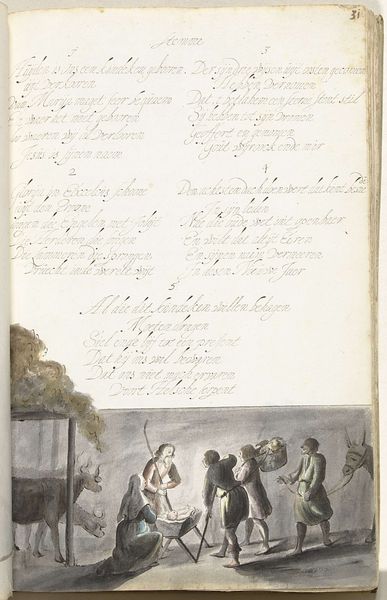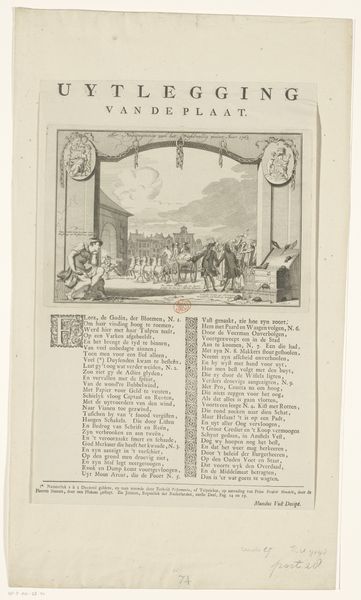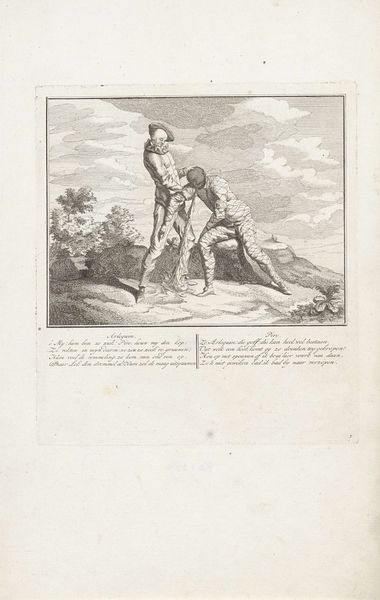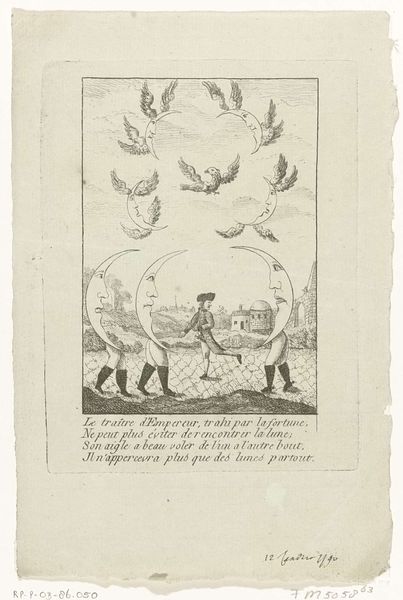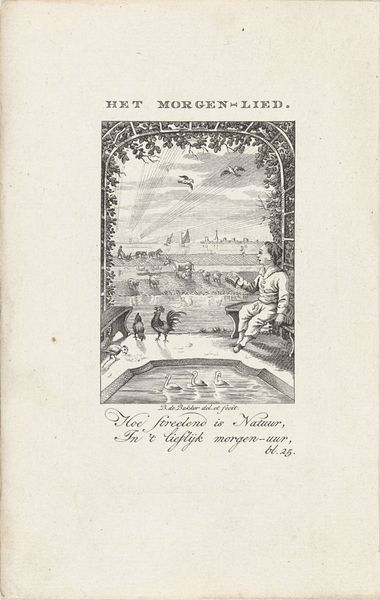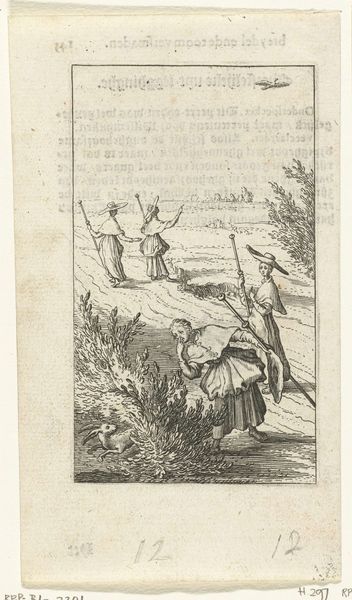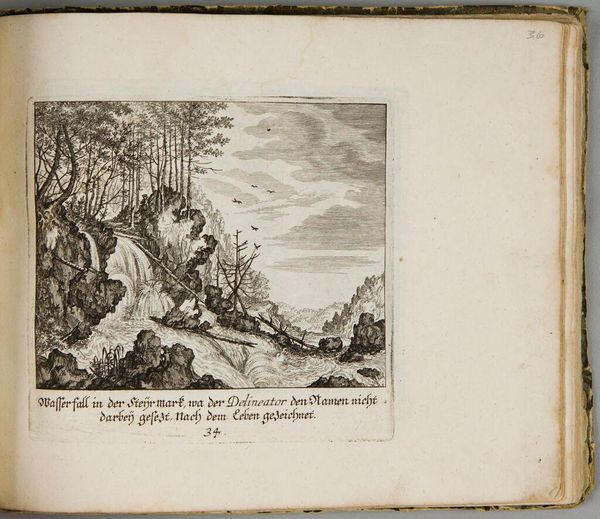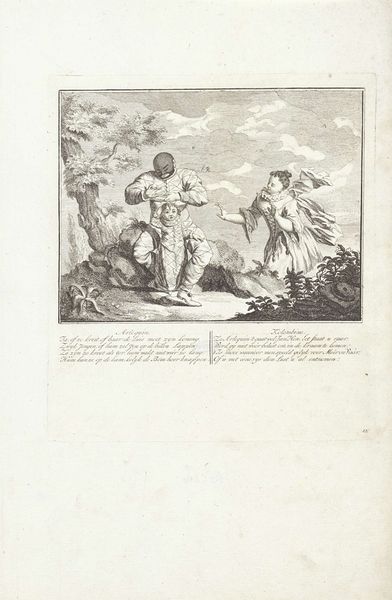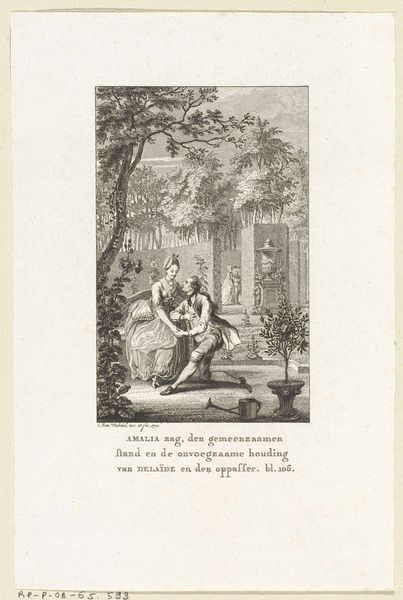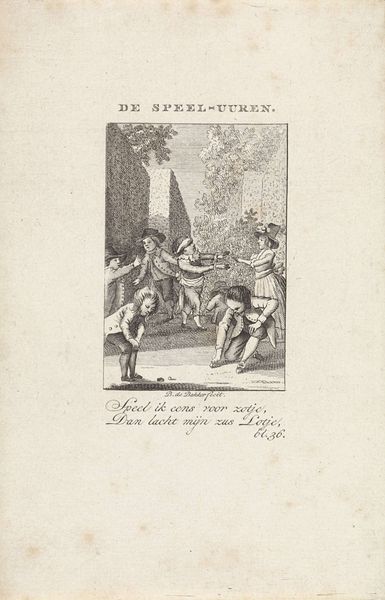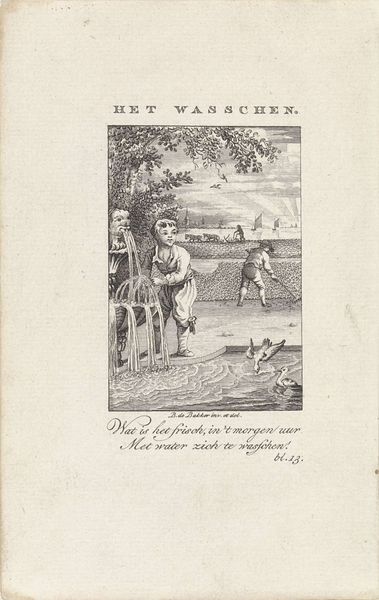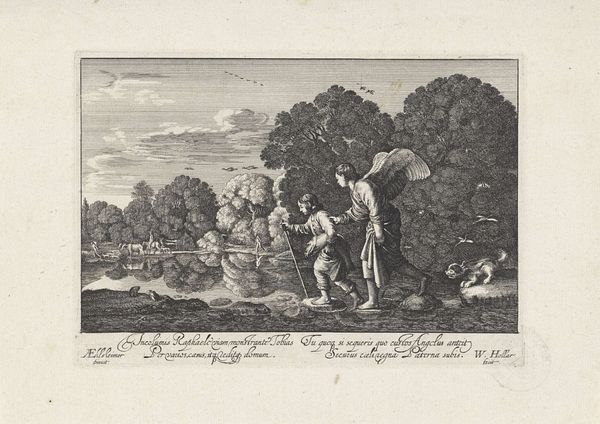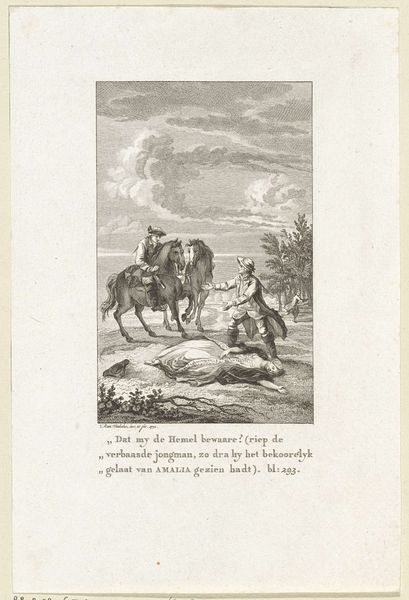
Dimensions: height 313 mm, width 204 mm
Copyright: Rijks Museum: Open Domain
This watercolor and ink drawing was made by Gesina ter Borch in the 17th century. We see a gentleman kneeling before a young lady, a powerful gesture of fealty and devotion. This act, laden with symbolism, goes beyond a simple greeting; it signifies submission and profound respect. The motif of kneeling echoes through centuries, from medieval courtly love rituals to religious iconography. Think of supplicants kneeling before a deity, or knights pledging allegiance to their queen. It's a visual shorthand that speaks to the dynamic between power and submission, desire and reverence. But consider how this gesture shifts. In the ancient world, kneeling might signify defeat before a conqueror; yet here, it is imbued with romantic undertones. It's as though the artist is tapping into a collective memory, a subconscious understanding of power dynamics and emotional vulnerability. The emotional resonance of this image lies in its ability to evoke empathy. Whether we interpret it as genuine adoration or performative display, the act of kneeling engages us on a deep level, stirring primal emotions linked to hierarchy, respect, and the complexities of human relationships. This symbol is a cultural echo, rippling through time and reshaping itself in each new context.
Comments
No comments
Be the first to comment and join the conversation on the ultimate creative platform.
